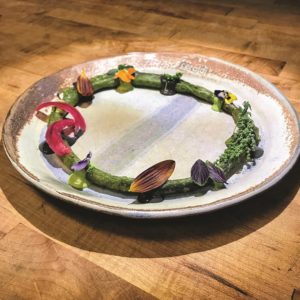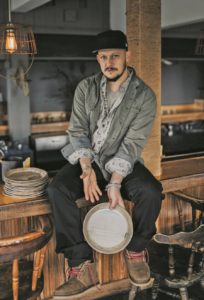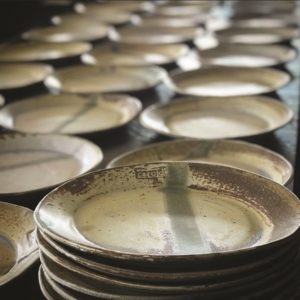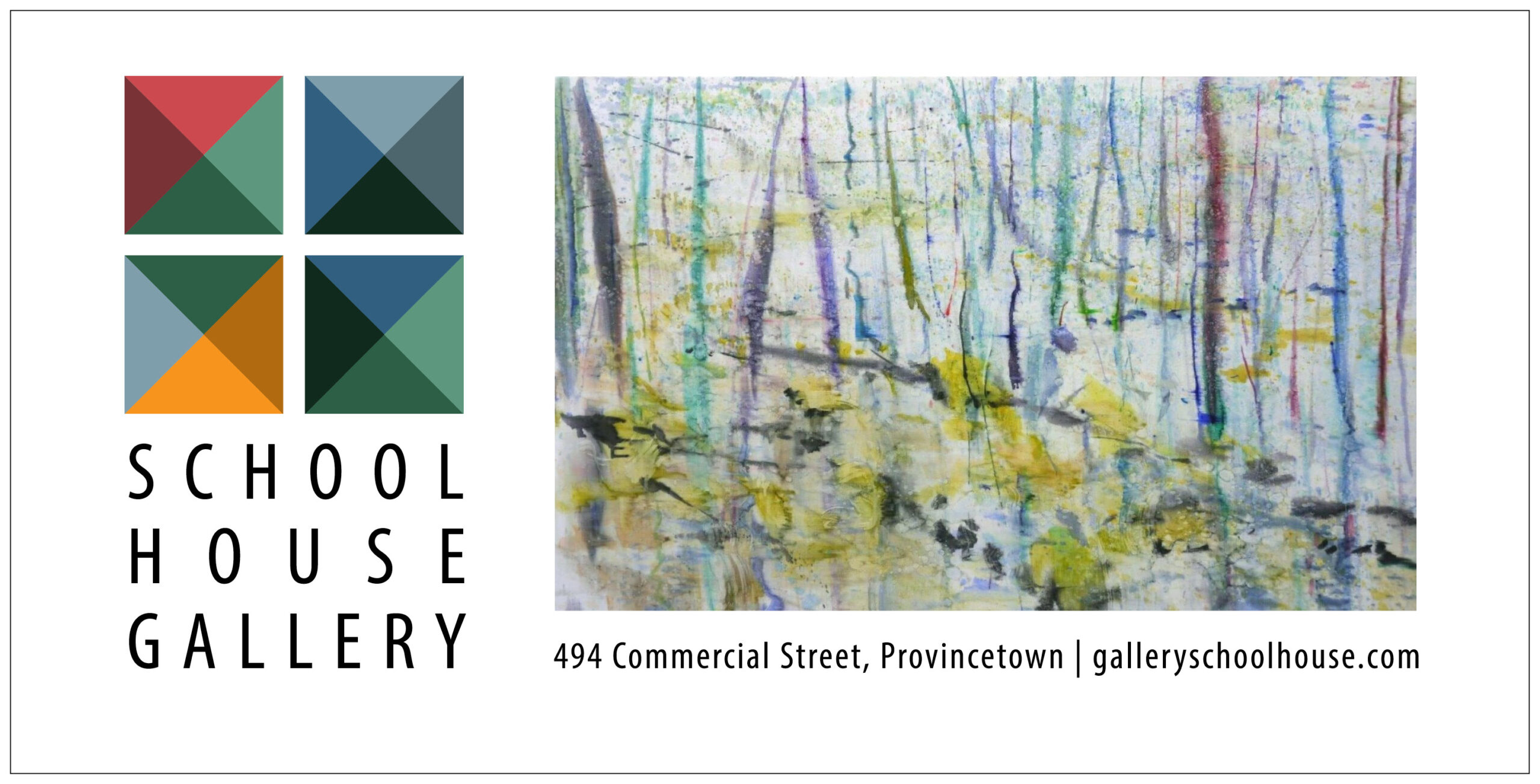Before he sends a plate to the dining room, Michael Ceraldi makes sure it looks beautiful. If you have been to his Wellfleet restaurant, Ceraldi, you know his idea of beauty has to do with everything on that plate reminding you of where you are right now. When there are fat beets in the garden, you will find wild splashes of their magenta juices alongside your malfatti.

Underneath your dinner, there’s the plate itself. Also beautiful. If you were there at the right time, early this summer, Ceraldi probably made it, too, with ingredients gathered from nearby.
Before he was a cook, Ceraldi was an artist. In high school, when his family moved from Nyack, N.Y. to Syracuse, he blew off steam in the 3-D art room. He got a B.F.A. at Syracuse University, where he studied video art, “the kind of major where you can keep on making things,” he says. “I did metalsmithing and ceramics.”
He met his wife, Jesse, a painter, there. But after starting the restaurant, her painting and his making things other than food went on hold. In the pandemic pause, it was Jesse who coaxed him back to ceramics.
“Just when you get used to the rhythms of summer, with the cortisol flowing, then suddenly it’s over and you crash,” Ceraldi says. “It was like that, and Jesse looked at me and said, ‘Michael, you need to get into the studio.’
“Making ceramics is a lot like cooking, for me,” he says, “when I’m in the vibe and I feel like I know what I’m doing.”

Over the winter, he made plates at Truro Center for the Arts at Castle Hill, where studio time came partly in exchange for teaching cooking classes. “After so much plating on disposables and palm leaves, I wanted to make something people could take home with them.” Most of his first batch are gone.
This coming winter, he plans to return to the task. He’s started building a studio, by which he simply means gathering the things he needs: a wheel, a worktable, and a kiln.
His plates are not thrown — they’re slab made. “You roll out the clay like you’re rolling out a big sheet of pasta,” he says. He then presses the clay into a wheel-thrown form, stamps it, and cuts it with a clay knife.
Before the pieces are fired, he coats the tops of the plates with a slip — a clay slurry — that “has a melted milkshake consistency.”
He makes the slip from a few pounds of clay found at Newcomb Hollow. “What I wanted was for people to eat Cape Cod off of Cape Cod on Cape Cod.” The food, he means, off of the plates, right here.

The Wellfleet clay has a lot of iron in it, Ceraldi says, so when it’s fired, the reds come out. He uses a raku glaze, which makes the plates durable enough to go through the dishwasher in his busy restaurant.
The plates are textured and stamped, earthy fields where flavors and flowers might take root.
But Ceraldi doesn’t think too much about exactly what he wants each piece to look like. “Just like I don’t go to farmers markets looking for specific ingredients,” he says. “I’m not that kind of chef.” The same is true with his ceramics, he explains. “Maybe if I’m painting, I let that work be more curated by my inner vision. But making ceramics is more like cooking — I like leaving it to the materials.”



